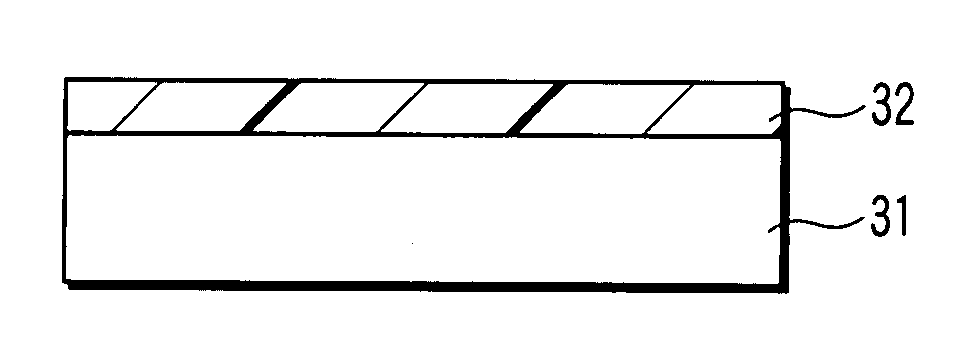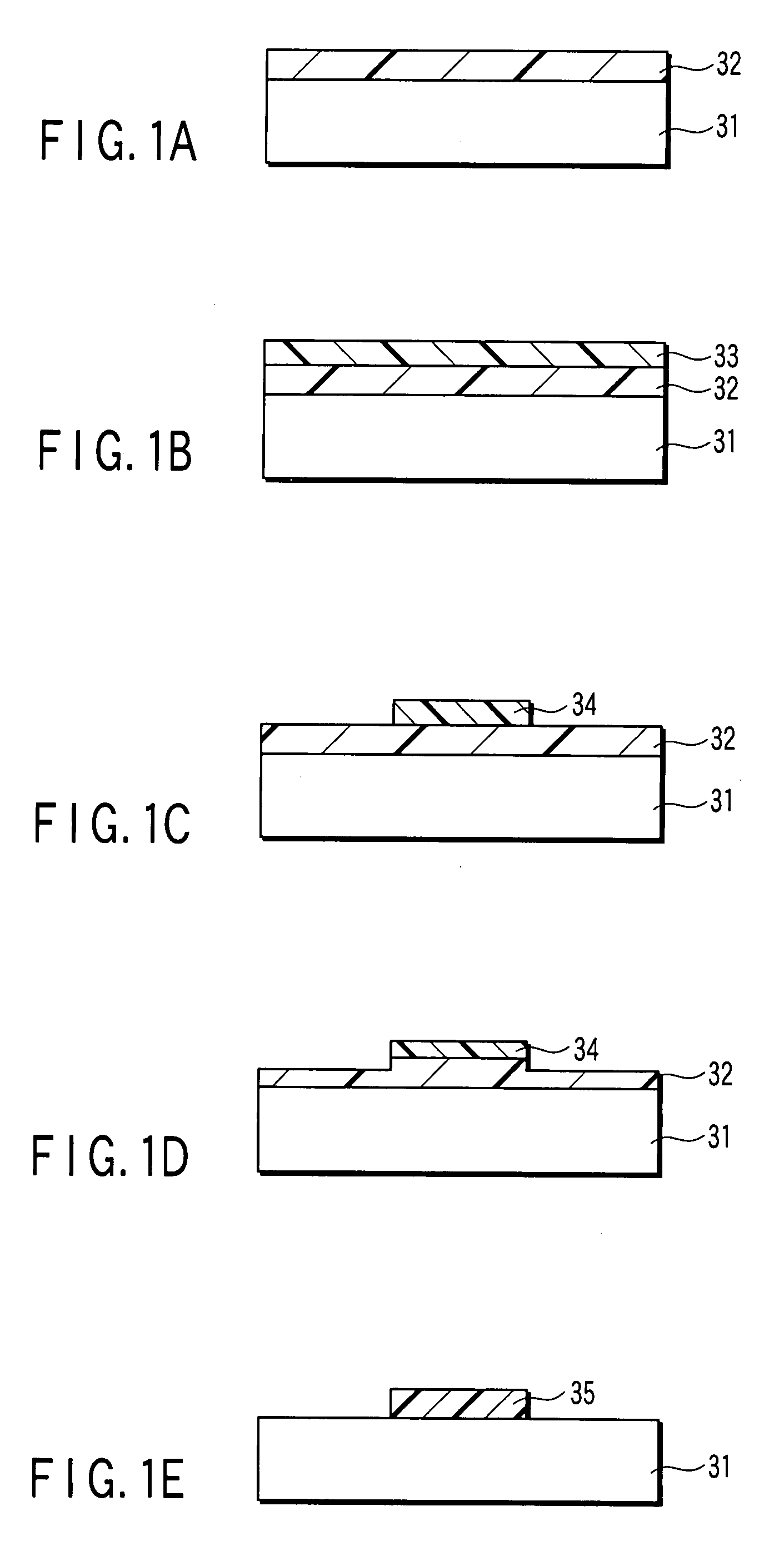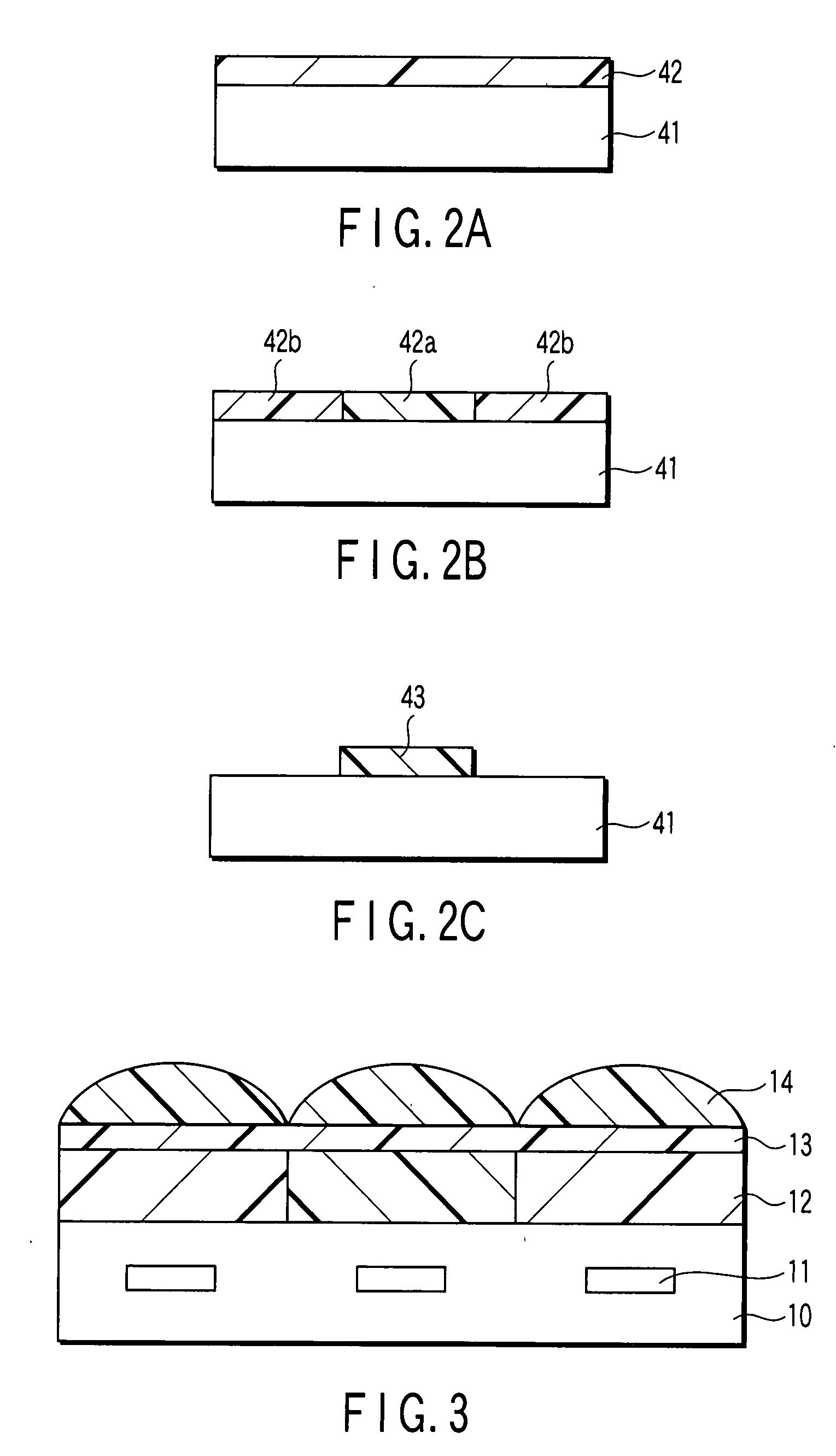Therefore, as the aperture is small in size, it will inevitably result in the deterioration of sensitivity of the
solid state image pickup device.
However, there has been increasing demand in recent years for a highly refined
solid state image pickup device having as many pixels of not less than six millions and hence the size of pixel of color filter to be mounted together with the solid state image pickup device is, in many cases, confined to a level of less than 2 μm×2 μm.
This in turn raises a problem that due to insufficient resolution of the color filter to be formed by means of
photolithography process, the properties of the solid state image pickup device are badly affected.
This insufficiency of resolution is manifested as color uneven originating from the malformation of pattern as the size of pixel becomes as small as not more than 2.5 μm or around 1.8 μm.
Namely, as the size of pixel becomes smaller, the
aspect ratio of pattern becomes larger (the thickness of pattern becomes larger relative to the width thereof), so that it is impossible to completely eliminate a portion of color filter that should be essentially eliminated (a portion other than the effective region of pixel), thus permitting it to remain as a residue giving an adverse influence to the pixels of other colors.
However, this raises another problem that when the developing time is prolonged, a portion of the color filter (pixel) that has been cured and essentially required to remain may be also peeled away.
Especially when the size of pixel becomes smaller, the properties of the color filter would be adversely affected by this horn-like edge, giving rise to the generation of color uneven.
When the film thickness of the color filter is increased, the edge portion of the pattern of color filter tends to become roundish as the
fineness of the pixel is further advance, thus more likely deteriorating the resolution of the color filter.
Therefore, when the concentration of pigments included in color filter
layers is increased, a quantity of light which is required for the photo-setting reaction of the resin may not reach to the bottom of the color filter
layers, thus making it impossible to sufficiently cure the photosensitive resin.
As a result, there will be raised a problem that the color filter layers may be peeled off in the developing process of
photolithography and hence defective pixels would be caused to be generated.
Furthermore, when the color filter is formed thick, in addition to the aforementioned problems involved in the manufacturing process thereof, there is another problem that the light entering obliquely into a portion of the color filter pattern may be permitted to pass, through a neighboring portion of the color filter pattern, into a photoelectric conversion element, thus raising problems such as mixing of colors and deterioration of sensitivity.
This problem becomes more prominent as the size of pixel of the color filter becomes smaller.
Incidentally, the problem of
color mixing of incident light would be raised even in a case where the distance between the color filter and the photoelectric conversion element is relatively large.
The decrease of
aperture ratio of the micro-lens (i.e., decrease of
photosensitivity) to be mounted on the highly refined solid state image pickup device and also the deterioration in quality of image due to the increase of
noise such as
flare and smear are now becoming great issues to be dealt with.
Therefore, when the diaphragm is actuated to move to the full open side, oblique incident light is caused to increase, thus deteriorating the converging property of incident light and hence deteriorating the sensitivity of the photoelectric conversion element.
However, since a color
resist to be employed in the photolithography process is poor in adhesion to a
semiconductor substrate, it will be peeled away in the developing step.
Therefore, it has been considered difficult to dispense with the flattening layer.
Even with this method however, it has been impossible to secure a sufficient adhesion of the color filter to the surface of semiconductor substrate.
There has been a problem however in designing the solid state image pickup device that, due to the characteristics of coloring material, a green
resist for forming the green filter is lower in
refractive index after the curing thereof as compared with a red
resist and a blue resist to be employed for forming the red filter and the
blue filter, respectively.
Namely, since the color resist to be employed in the photolithography process is required to be excellent in
photosensitivity, it is difficult to select one which is also high in
refractive index after the curing thereof, thus creating a discrepancy in
refractive index among these three different color filters.
Because of this discrepancy, the light converging effect by the micro-lens is also caused to differ among these color filters, thus raising a problem that non-uniformity of reflectance is caused to be generated among these color filters.
As described above, the color filter to be created by means of the conventional photolithography process is accompanied with various problems that it is impossible to secure sufficient resolution, that residues of color filter tends to remain unremoved, that the peeling of pixel is more likely to occur, and that the characteristics of the solid state image pickup device may be deteriorated.
Additionally, there are also problems that not only the distance between the color filter and the photoelectric conversion element but also the distance between the micro-lens and the photoelectric conversion element (under-lens distance) is caused to become large.
 Login to View More
Login to View More  Login to View More
Login to View More 


